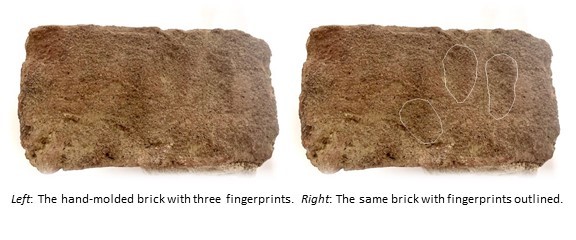By Heather Hembrey, M.A., M.A.A.

In 2001, archaeologists testing areas of Grist Mill Park in Alexandria focused on the remains of a brick barn. The barn was built for John Ballinger ca. 1850-1860. In 1857, Ballinger had purchased a 100-acre tract from his father-in-law David Walton. Walton and his wife were among the many Quakers from northern states who purchased land in Virginia after prices plummeted during the depression of 1840. Ballinger’s land had once been part of George Washington’s Mount Vernon estate.
Ballinger’s new barn was located several hundred feet to the north of the site of a barn that George Washington’s workers constructed in ca. 1787 when the tract was known as Union Farm. In 1793, Washington described his new barn, “On what is called Union Farm... there is a newly erected Brick Barn equal perhaps to any in America, and for conveniences of all sorts, particularly for sheltering and feeding horses, cattle, &c., scarcely to be exceeded.” Washington’s barn complex included an overseer’s house and cabins for the enslaved workers. Deeds mention the brick barn until 1860, by which date it was likely razed.*
Ballinger may have used bricks from Washington’s barn and possibly Washington’s grist mill when he constructed his new barn. As they excavated Ballinger’s barn site, archaeologists recovered 121 whole and partial bricks. One brick has a “personal touch”. This brick has the impression of fingerprints. The worker who made the brick had used his right hand to pick up the damp brick by its header, leaving prints of his three middle fingers in the clay. When the brick was dried and fired, his prints remained. The incomplete hand-molded brick may be among the bricks from Washington’s abandoned structures that Ballinger repurposed.
The fingerprints may directly connect us to the individuals who likely built Washington’s barn or grist mill in the 1790s. We will never know specifically who left his fingerprints on the brick. He may have been someone who Washington enslaved, or an enslaved or free workman Washington hired for the job. The fingerprints connect us with the people would have been so important in the day-to-day operations on George Washington's properties. This simple artifact speaks volumes.
* 2001. O’Neill, Patrick L. Phase I Archaeological Investigations at...George Washington’s Union Farm, Grist Mill Park, Fairfax County, Virginia.


